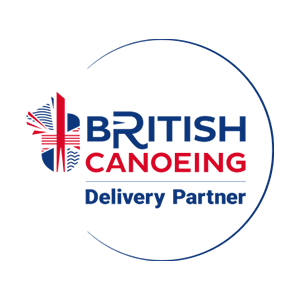Emily's Antarctic Update: What does an Antarctic Expedition look like?
Written on 13th November.
Trip dates: 28th- 3rd November set-up sail from Montevideo (Uruguay) to Punto Arenas (Chile)
3rd-13th November FIRST TRIP TO ANTARCTICA (Punto Arenas – Antarctica – Ushuaia)
Sorry it’s taken so long for another update, but we’ve been super busy and unsurprisingly, internet connection is in short supply!
It seems a life time ago I was waiting for our ship to arrive in Montevideo (Uruguay) and this first trip has been such a whirlwind of excitement, new experiences and learning that it’s hard to put it in to words. I’ll do my best…
The Ship
The first thing we did in Montevideo was to wonder around the ship and get ourselves used to the layout. There’s 9 decks (I think) with a range of cabins of different ‘fanciness’ levels, a couple of lounges, a dining room and the library; which is my favourtie room as it has cosy sofas, good windows and a constant supply of cookies and tea, perfect!
I’m in an inside cabin on the 4th floor, which I thought would feel a little like a coffin, but is actually surprisingly pleasant and is definitely starting to feel like home now.
The 4 days it took us to sail from Montevideo to Punto Arenas (Chile) was filled with getting the ship ready for Antarctica; things like getting photos of Antarctica on the walls, unloading all the new kayak gear, stocking the library with Antarctic books, setting up the onboard shop etc. Lots of organising and even more unpacking, but it was mostly a great time to get to know the boat and each other with a bit of training thrown in to prepare us. Most of the team have been doing this for years, so it was great to have plenty of time to ask them questions and soak up a bit of their knowledge!
The Trips
One of the first things I wanted to get my head round was how the trips looked, what makes it an expedition cruise rather than just a cruise? What do we do each day? What will I be doing? etc.
Most trips start in Ushuaia. Guests embark late afternoon and we then take two whole days to reach Antarctic, longer if the weather is being unkind. Once there we try and get the guests out as much as possible. The day is split into two halves and in the perfect world we would take half the guests on a Zodiac cruise and half the guests to land, and then switch. We’d then all come back to the ship for lunch, sail to a new area and do the same again in the afternoon. On good weather days I’ll offer a kayaking option and if we have a nice evening we’ll take some of the guests onshore to camp, and of course one night we do the polar dip!
We have around 4 days in Antarctica (which feels like a lot longer as we’re SO busy) and then we’re back in the open ocean for another 2 days crossing the Drake Passage once again to get back to Ushuaia.
HOWEVER… One of the most humbling lessons I’ve learnt is that once in Antarctica, what we do is entirely at the mercy of Antarctica. It’s remote, unpredictable and changes in a second. Nature always has the final say, whether it’s due to wind, sea conditions, density of ice, fog etc. we need to be ready to change plans at the drop of a hat, and that happens often! Each day we wait and see what the weather looks like and make a plan around 10 minutes before we leave the ship. Lots of quick thinking decision making and expertise are needed to operate in Antarctica and I’ve loved watching and learning from the incredible leaders I have the honour of working with. It’s outdoor leadership on a different scale, one that I find hard to quantify, but the vastness, remoteness and unpredictability paired with the number of people, tight regulations and disembarking everything from a ship each time, makes it a fascinating and enthralling dance which takes great talent to get right. Like most teams, we’ll take a while to perfect it, but from my point of view it’s exciting, humbling and often, a lot to learn.
Guests have to learn to be at ease with never knowing the plan from day one. They often think we’re being facetious, and keeping our cards close to our chest, but the reality is every plan we make almost certainly doesn’t happen, so it’s easier to just make the decisions in the moment and plan for every eventuality. It’s an interesting learning curve for most people who are so used to being in tight control of their schedules. Antarctica certainly throws that out the window!
What does landing onshore look like?
The Antarctic Peninsula is full of islands as well as mainland Antarctica, so there is plenty of places to explore. The landing sites often involve penguin colonies, so a big part of our job is getting there 15 minutes before the guests so we can stake out where they can/can’t go. We have to think about proximity to wildlife, crevasses and of course, general snow/ice safety. This season is the snowiest season any of our team has ever seen in Antarctica (a sure sign of climate change) so we’re also spending a lot of time tramping down paths in the 3-foot-deep snow and cutting snow steps so guests can get ashore. One of the more random jobs is making sure that any deep foot holes made in the snow get covered up, because if a penguin was to fall into a foot hole, it might get stuck and not be able to get out. If you’d told me a year ago I’d be filling holes in the snow in Antarctic to stop penguins getting stuck I’d have thought you mad!
Another important part of being the shore team is to ensure guests don’t break any of the IATTO guidelines. Our biggest concern is ensuring we have as little impact as possible on Antarctica and a big part of this is biosecurity. We don’t want to introduce any invasive species, or spread any diseases, like Avian Flu, from the outside world, or pass them from place to place in Antarctica. At the end of each landing, guests must scrub the bottom of their boots to remove any penguin poop, sand, etc. and will then step in a liquid disinfectant to remove anything left on their boots. This year IATTO have also brought in a rule that only your boots can touch the ground so no kneeling, no putting your bag on the ground, no snow ball fights and this is all to protect Antarctica against the Avian Flu which has savaged the northern hemisphere birds this summer.
One of my favourite shore jobs is being on penguin control. All it involves is standing next to the penguin colony, telling guests all about the penguins and making sure everyone stays 5m away and doesn’t do anything crazy. It’s amazing, although can get a little cold after a couple of hours! The most common species of penguin we’ve been seeing is the Gentoo Penguin although Chinstrap, Adelie, and an Emperor have also made appearances.
What is a Zodiac Cruise?
Firstly, a Zodiac is an inflatable powerboat. Zodiac is the brand which almost all polar expedition boats choose, they’re durable, well tested and can cope with almost anything. We put 10 guests in each boat and can drive them straight onto the beach or push ice out the way in them without much risk of damage. We drive them standing up with a tiller at the back of the boat. A very simply system which takes a little time to get used to, especially the standing up bit! Fortunately, I think all that white water paddleboarding gave me a good head start to learn the balance! I’ve been lucky that the talented people I work with have dedicated lots of time to teaching me how to drive and I’m starting to get the hang of it. So far, I’ve driven in calm conditions, 55 knot winds, in ice and have learnt a man overboard drill. I think a few more times out and a quick mechanical lesson for easy fixes incase it breaks down, and I’ll be feeling confident ready to go!
We use the zodiac for anything off the ship. For kayaking we take the people and the kayaks (towing behind) from the ship to a good kayaking spot and load people into the kayaks from the zodiac. For landings we take people from the ship to the landing site and of course we use them for Zodiac Cruises. I suppose it’s these Zodiacs that make us an expedition boat. We can get almost anywhere using these boats and don’t need any infrastructure to land, just a piece of land which isn’t too close to a glacier face. It seems like a subtle difference but when you’re living it you realise how privileged it is to be able to access such remote places, and also what an operation it is to crane around 20 powerboats off of a ship and load up to 200 people into them.
The Zodiac Cruises (or Zodiac Adventures as I call them) are a great chance for us to cruise around the waters, passing by amazing blue icebergs and looking for wildlife on ice. It’s common to find leopard seals, weddell seals and penguins sat on ice, have birds flying around or perched on the ice and of course, if we’re lucky we’ll see some whales. So far, we’ve seen minke, humpback and fun whales. Pretty awesome!
What happens on the Drake Passage?
Each trip we’ll spend at least 4 days at sea, 2 days each way. We fill that time with kitting the guests up with their big muck boots, puffy jackets and waterproof jackets. They also have to watch the IATTO guideline video, and spend time bio-securing all their clothes. We also have a whole series of educational lectures on everything from penguins to Antarctic Explorers and one of my favourite things to do is sit and watch my colleagues giving their lectures, lots of different delivery styles and great information to learn. Of course, lots of people experience sea sickness, I’ve been fine so far (hooray), but lots of guests suffer from it so we don’t see some of them for a couple of days.
The Drake Passage is renowned as the roughest sea crossing in the world; you either get the Drake Lake, or the Drake Shake depending on conditions. This first trip we were lucky and were definitely at the ‘Drake Lake’ end of the scale, I’m sure in trips to come that will change, but I’ll certainly take the smoother seas while I can. The ship is still rocking a lot in Drake Lake, so goodness knows what it will be like in big seas!
Once again, I’m running out of time whilst writing this. I’m currently sat in a café in Ushuaia trying to use the Wi-Fi to connect to the outside world and I now need to make my way back to the ship before our next set of guests arrive in 15 minutes. I realise I’ve not explained too much about how this first trip actually went, it was amazing by the way, so perhaps I’ll try and write a message about what we did and saw each day with some photos. As well as explaining how kayaking in Antarctica works!
For now, I’ll leave you with this video of our first trip. It’s safe to say I loved every minute of it and can not WAIT for the next trip. I’M GOING BACK TO ANTARCTICA TONIGHT, can you tell I’m excited?!
P.S. Glamours Gliders, and all the other Willowgate swimmers, I didn’t want to, but I did the polar plunge just for you (note the screams). Unfortunately you can only wear hats if you attach them to your head (so we don’t litter the sea) so I’ll have to come up with something creative for next trip so I can wear my Scotland hat!
P.P.S I loved the plunge!





























